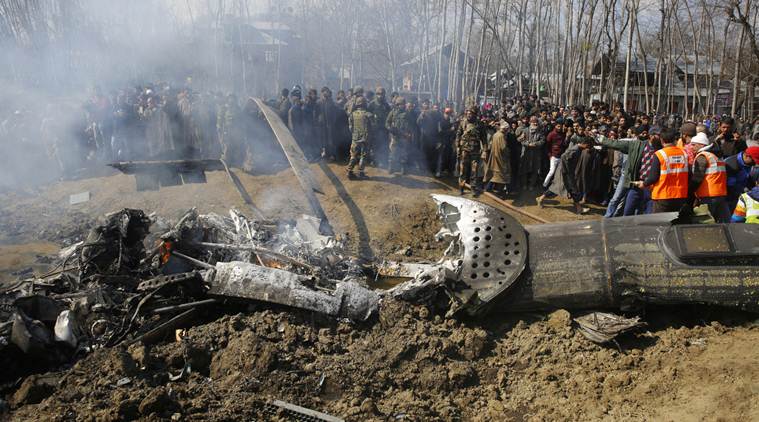- India
- International
Budgam crash: IAF Srinagar base commander transferred
Sources said that the Air Officer Commanding was posted out “a couple of weeks ago” but refused to confirm if it was directly linked to the incident.
 An IAF Mi-17 chopper crashed in Budgam area of Jammu and Kashmir. (Express photo/Shuaib Masoodi)
An IAF Mi-17 chopper crashed in Budgam area of Jammu and Kashmir. (Express photo/Shuaib Masoodi)
The Air Officer Commanding of the Srinagar air base in Jammu and Kashmir has been posted out before the end of his tenure in the middle of the Court of Inquiry (CoI) probing the crash of the Air Force Mi-17 helicopter in ‘friendly fire’, coinciding with the air engagement between India and Pakistan on the Line of Control (LoC) on February 27.
Sources said that the Air Officer Commanding was posted out “a couple of weeks ago” but refused to confirm if it was directly linked to the incident. The IAF did not comment on the subject maintaining its stance that the CoI is still ongoing. The inquiry is being headed by a senior helicopter pilot of the rank of Air Commodore.
After the CoI is completed – the IAF has refused to give any timeline for its completion citing involvement of reports from other government agencies – the Air Force will have to take a decision to initiate the recording of the summary of evidence based on the findings of the inquiry. Then, charges will be framed against the guilty personnel and court martial proceedings initiated.
The judgment of the court martial will have to be confirmed by appropriate authorities before punishment starts for the convicted personnel. Sources said that this is a “detailed legal process” and “any attempts to pre-judge the case by suggesting charges” will damage the IAF’s position in case of a review of the court martial judgement by a High Court or the Supreme Court.
The inquiry followed reports that the helicopter, which was returning from a routine logistics mission to Tangdhar, was shot down by a Spyder surface-to-air missile fired from the Srinagar air base at around 10 am, when Pakistan had attempted an airstrike at military installations in Rajouri sector of J&K. The IAF was then at its highest alert following the Indian airstrike on a Jaish terror camp in Balakot, Pakistan a day earlier.

Though the black box of the helicopter was not found at the crash site, sources said that preliminary findings point to two issues: that the pilot had not put the IFF (Identify Friend or Foe) switch on, it was in standby mode; and that the Air Traffic Controller (ATC) had failed to direct the helicopter into the designated safe entry channel for the base when enemy aircraft were being engaged a few kilometres away.
The IFF switch works by sending a ping to the radar which allows it to identify the incoming aircraft as ‘friendly’, while a safe entry channel is designated for entry of all own aircraft where air defence is not supposed to engage. It is believed that these two failures led to the friendly fire which shot down the Mi-17 helicopter leading to the death of six IAF personnel and a civilian.
Senior IAF officials said that while this incident should not have occurred, the base air defence officer who gave the order to fire the Spyder missile did the correct thing as enemy action was on a few kilometres away. Officials also gave examples of similar incidents in many other modern air forces, as well as in previous wars fought by the IAF.
Apr 19: Latest News
- 01
- 02
- 03
- 04
- 05





























